The new 50th Anniversary commemorative Springfield Armory M1A rifle is more than just a temporal milestone. Sporting a high-end stock with a unique commemorative coin, a military-style wooden crate, a classic OD green cotton sling and all the bells and whistles, this M1A signifies something truly special.
The M1A first drew breath in 1974, and there will only be 1,974 copies of this bespoke rifle released to the public. In addition to all that cool-guy stuff, this M1A also comes with a GI bayonet lug, just like Nature intended.
Aging Gracefully
I used to think that any 50-year-old anything was absolutely ancient. That is, after all, fully half a century. And then my own personal Hobbs meter screamed past that point, and 50 years suddenly just seemed like a decent start.
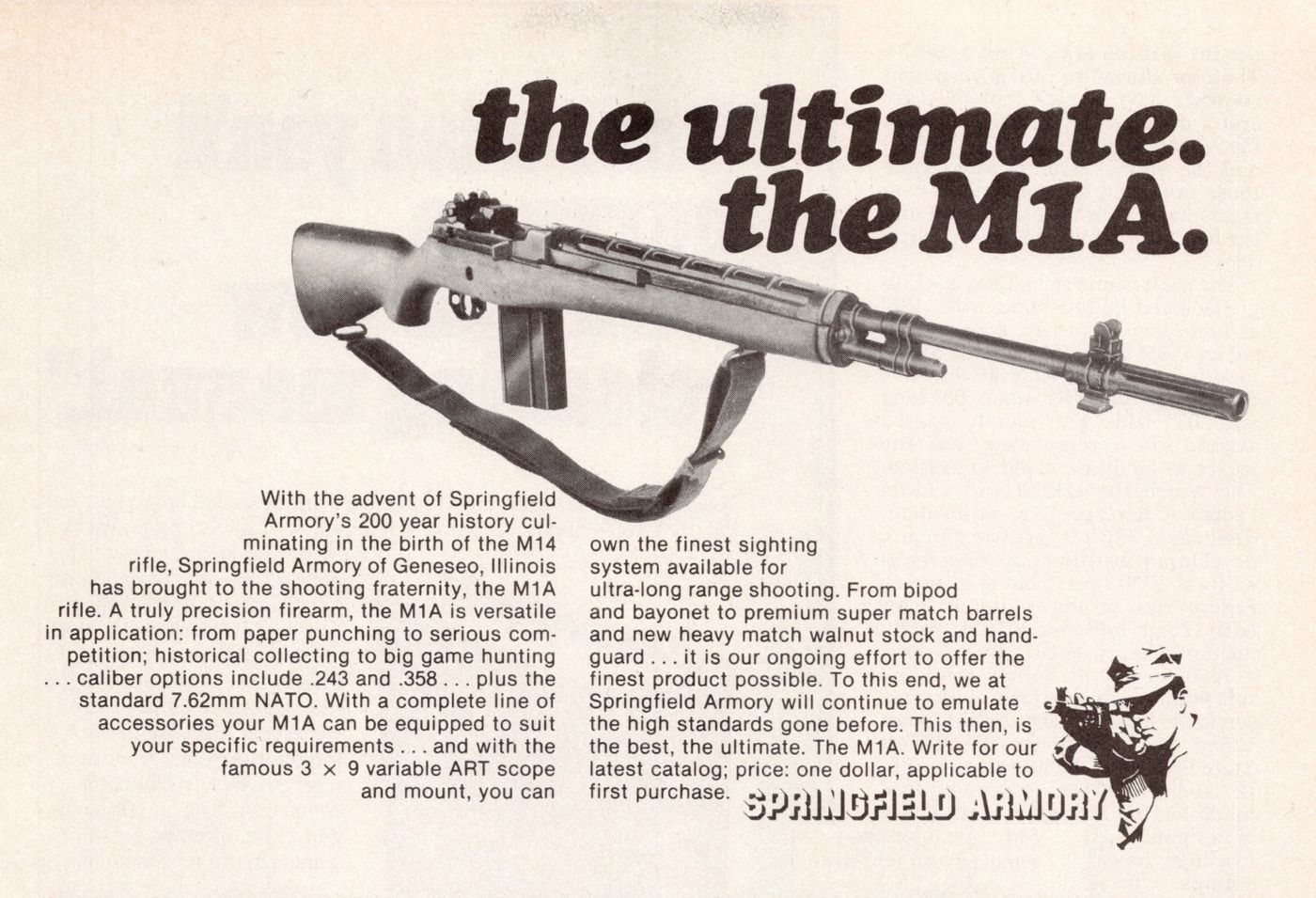
I was eight years old when Springfield Armory sold their first M1A. As a young buck utterly addicted to firearms myself, I remember them in the gun periodicals of the day. At a time when my yard-mowing money struggled to keep me in cap gun ammunition, the possibility that I might someday own an M1A myself seemed lyrically impractical.
A tricked-out M1A actually very nearly ended my burgeoning marriage. I had $400 meticulously horded over many birthdays and Christmases as a gun buddy and I hit the big regional gun show. I also packed a decent Italian tactical shotgun to use as barter. When I saw that tricked-out Springfield Armory M1A sitting on the table, I thought I could hear angels singing.
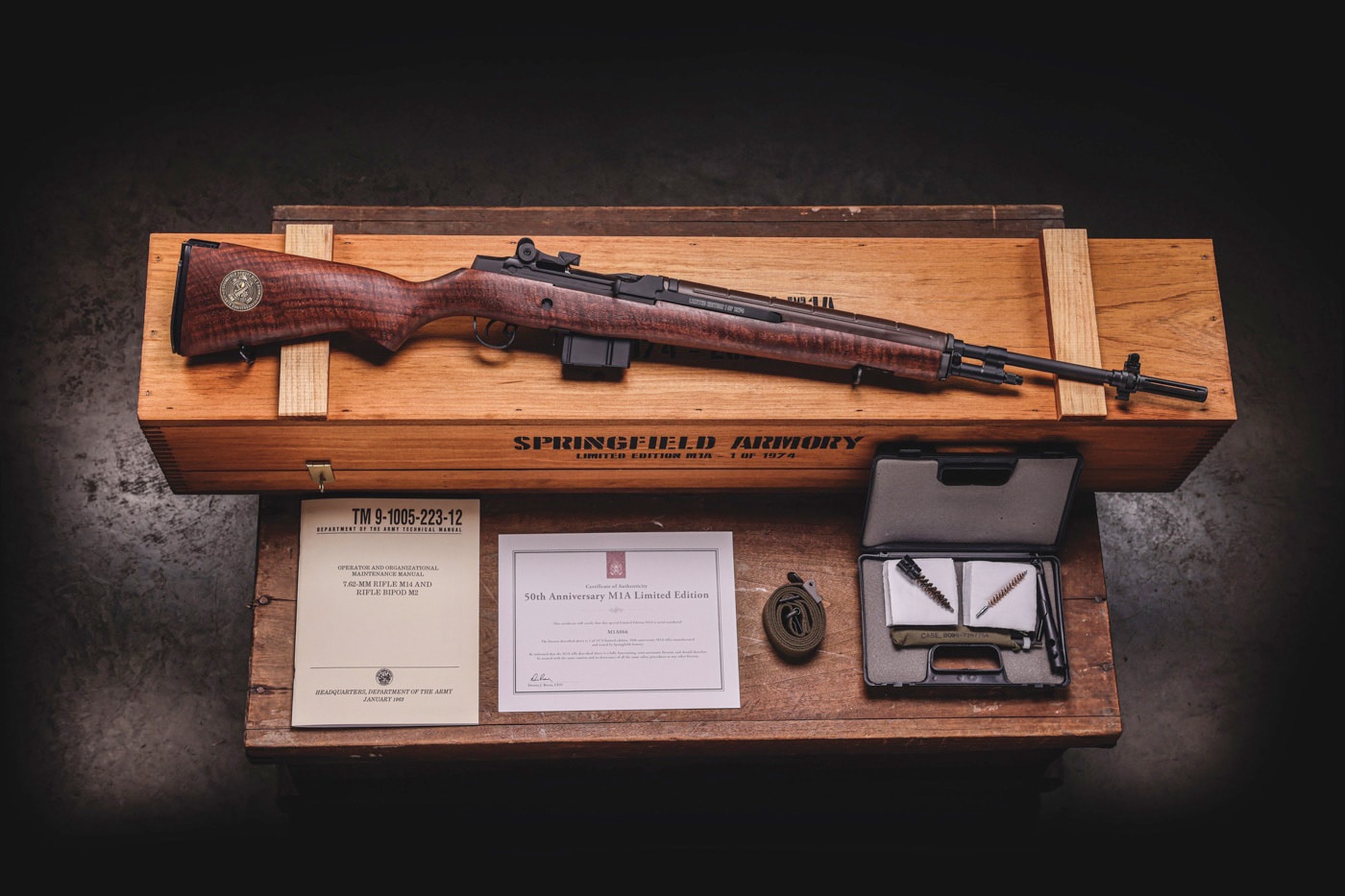
I struck a deal to swap my cash, the scattergun, and $300 on the plastic for that optimized M1A rifle. I got my buddy to drive home so I could drool over the gorgeous thing. Once back, I eagerly showed the new addition to my young bride. She knew nothing of firearms, but she recognized quality. She knew immediately I did not get that rifle for $400 and a high-mileage shotgun. I was wrapping up my last year in engineering school, and she was the sole breadwinner. I was doomed.

If you’re wondering, everything turned out OK. I still have both the rifle and the awesome wife. However, since that very moment, I have not spent a slim dime of family money on anything discretionary without approval from my longsuffering better half. The point being, the Springfield Armory M1A and I have enjoyed quite the journey together.
Origin Story
The selective fire M14 from which the semi-auto M1A spawned did not long serve as Uncle Sam’s strong right arm. Officially adopted in 1957, the M14 remains a special-issue weapon serving downrange with selected marksmen even today.
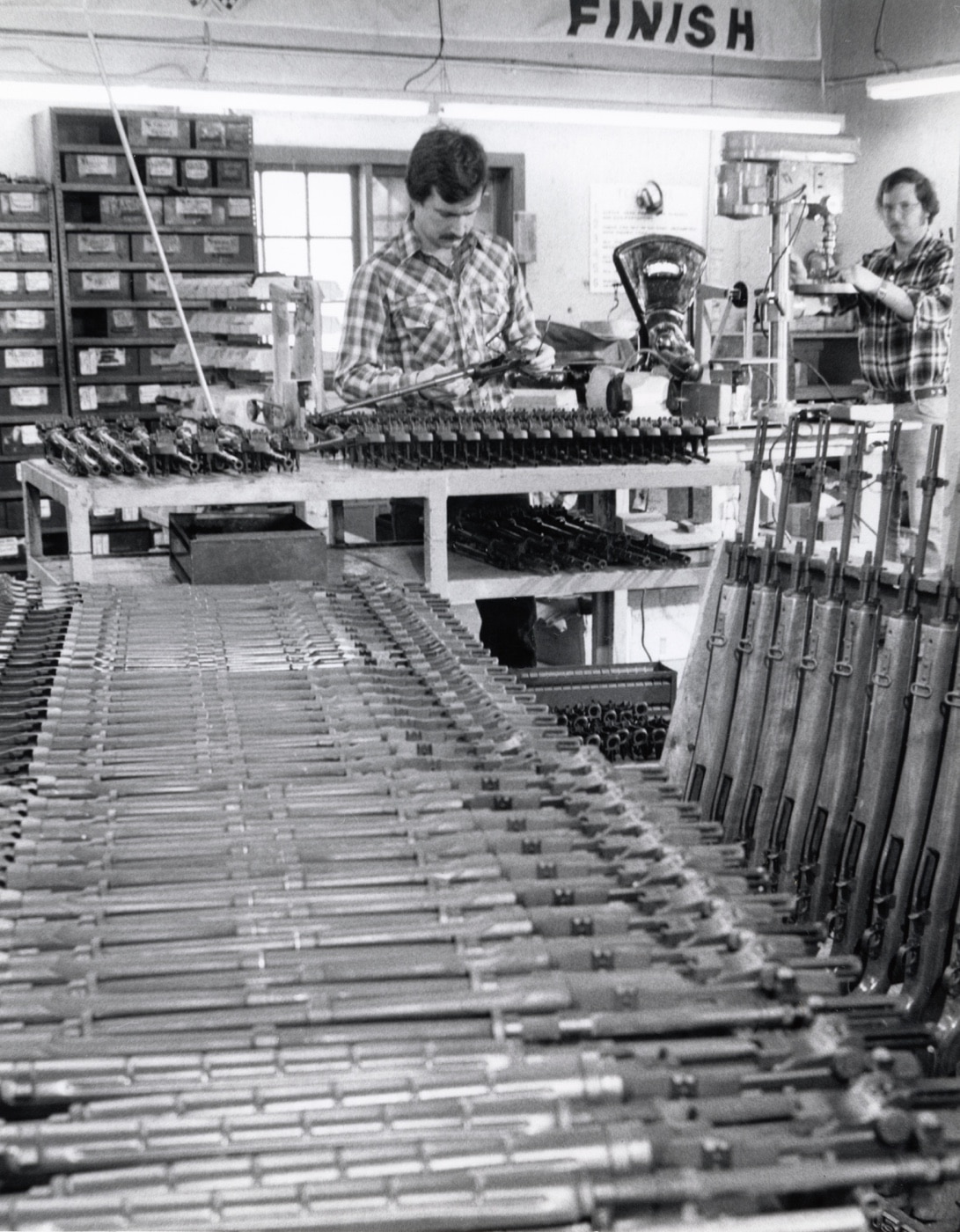
The M14 was technically born in the 1930’s. A French-Canadian named John Garand (pronounced, I’m reliably informed, with the emphasis on the second syllable, like “Errand”), designed the first T1E2 rifle that was ultimately designated the “Semiautomatic Rifle, Caliber 30, M1.” While the M1 Garand might seem bulky, heavy and slow by today’s standards, that bad boy absolutely dominated back in the day.
The M1 rifle was laboriously loaded from the top via awkward eight-round en-bloc clips. En-bloc meant that the clip became part of the action while firing. American planners were already scheming out a replacement by the onset of World War II. However, WWII was a come-as-you-are party.
American G.I.s freed the world behind their amazing M1 rifles. We made nearly 5.5 million copies. They adored every single one of them.
Tactical Cred
My wife’s grandfather fought in North Africa, Sicily, and Italy all the way until V-E day. I once asked his opinions of the weapons they used. He loved his M1911A1 and respected the carbine for its portability and magazine-fed design. However, he said you often had to hit a man several times with a carbine to put him down. By contrast, he said if you could connect with anything substantial with an M1, that enemy soldier was just done.
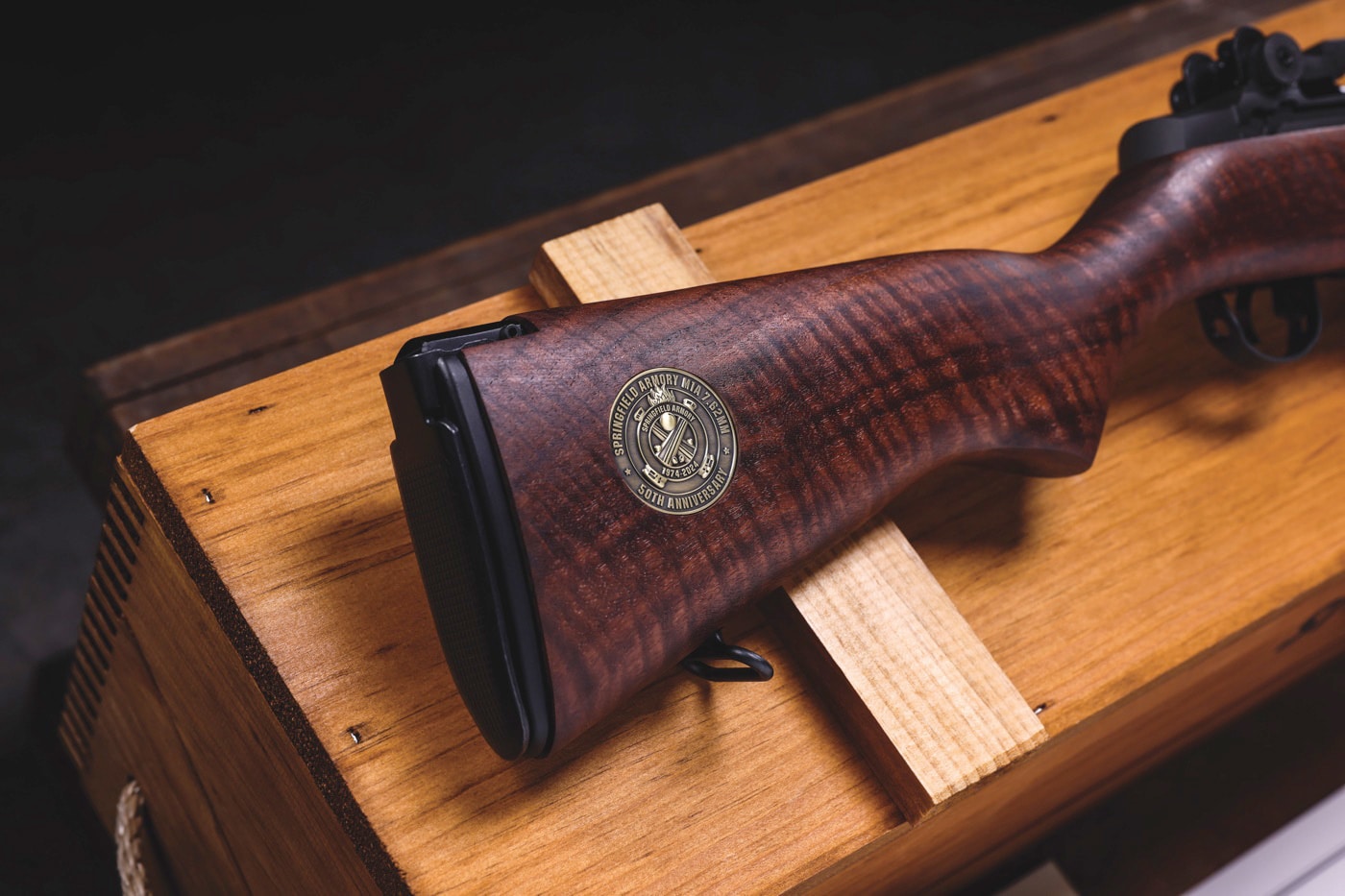
Once the guns fell silent in 1945, Earle Harvey and Colonel Rene Studler were transferred to the original Springfield Armory to resume work on the M1’s replacement. The new rifle would eventually become the T44 in the then-new 7.62x51mm round.
The T44 was everything the WWII-vintage M1 could have been. Using the same basic action but now offering selective-fire operation and a readily detachable 20-round box magazine, the T44 was 44” long and weighed 9.2 lbs. empty. Despite the smaller footprint and lighter weight of the 7.62x51mm round, the rifle offered ballistic performance comparable to that of the larger .30-06 of the M1 Garand. Harvey, Studler and the rest of their team had clearly captured lightning in a bottle.
Details
The T44 was truly remarkable. It clearly hewed to what made the M1 so great, but upgraded and modernized the design where needed. It included a bolt roller to minimize frictional effects. The abbreviated gas system and long flash suppressor cut a dashing figure. The operator could still charge the rifle from the top via stripper clips, but this feature didn’t get used much.
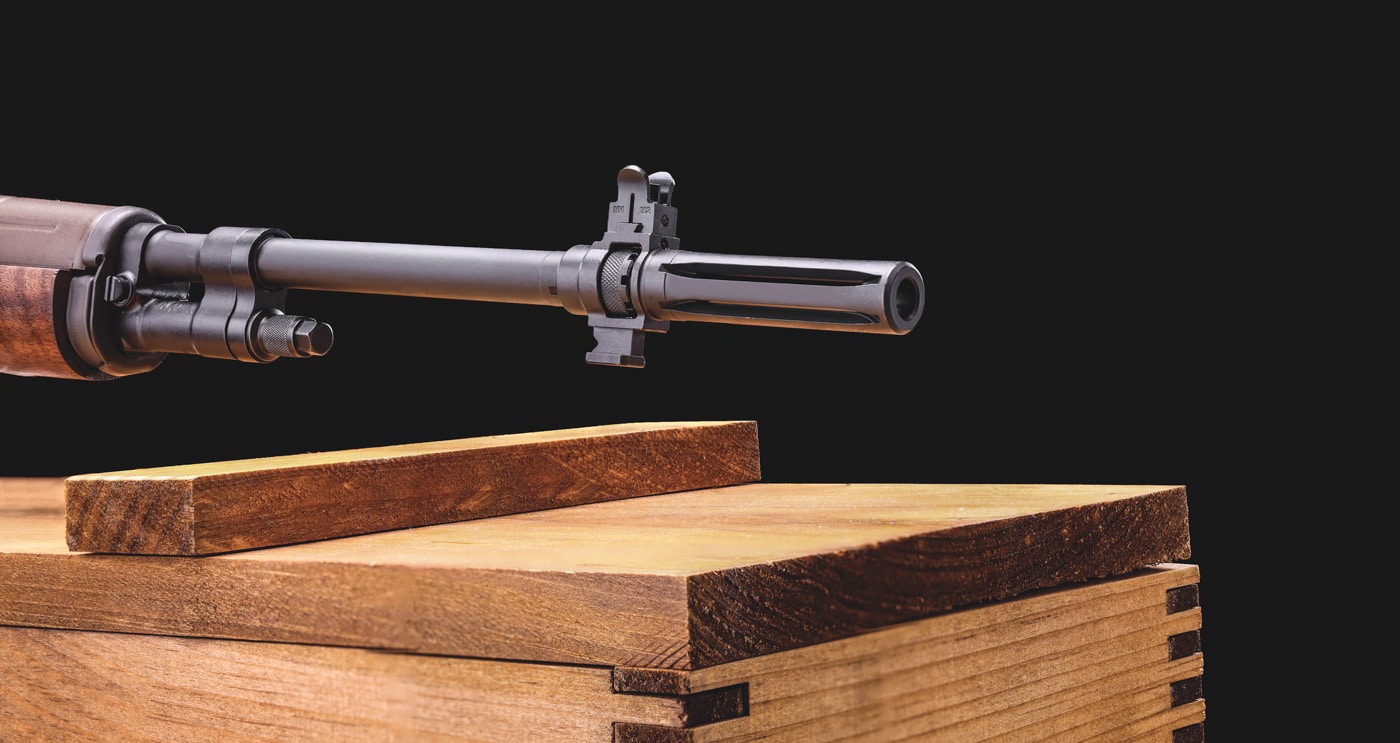
The sights included a readily adjustable, user-friendly rear sight. Windage and elevation adjustments required nothing more than a standard set of human fingers. Those of the subsequent M16 were actually a step backwards in my opinion.
Magazines had to be hooked in the front and rocked into place, but this made the rifle easy to load with the bolt closed. The safety was the same pivoting tab located in the front of the trigger guard that was pioneered in the previous M1.
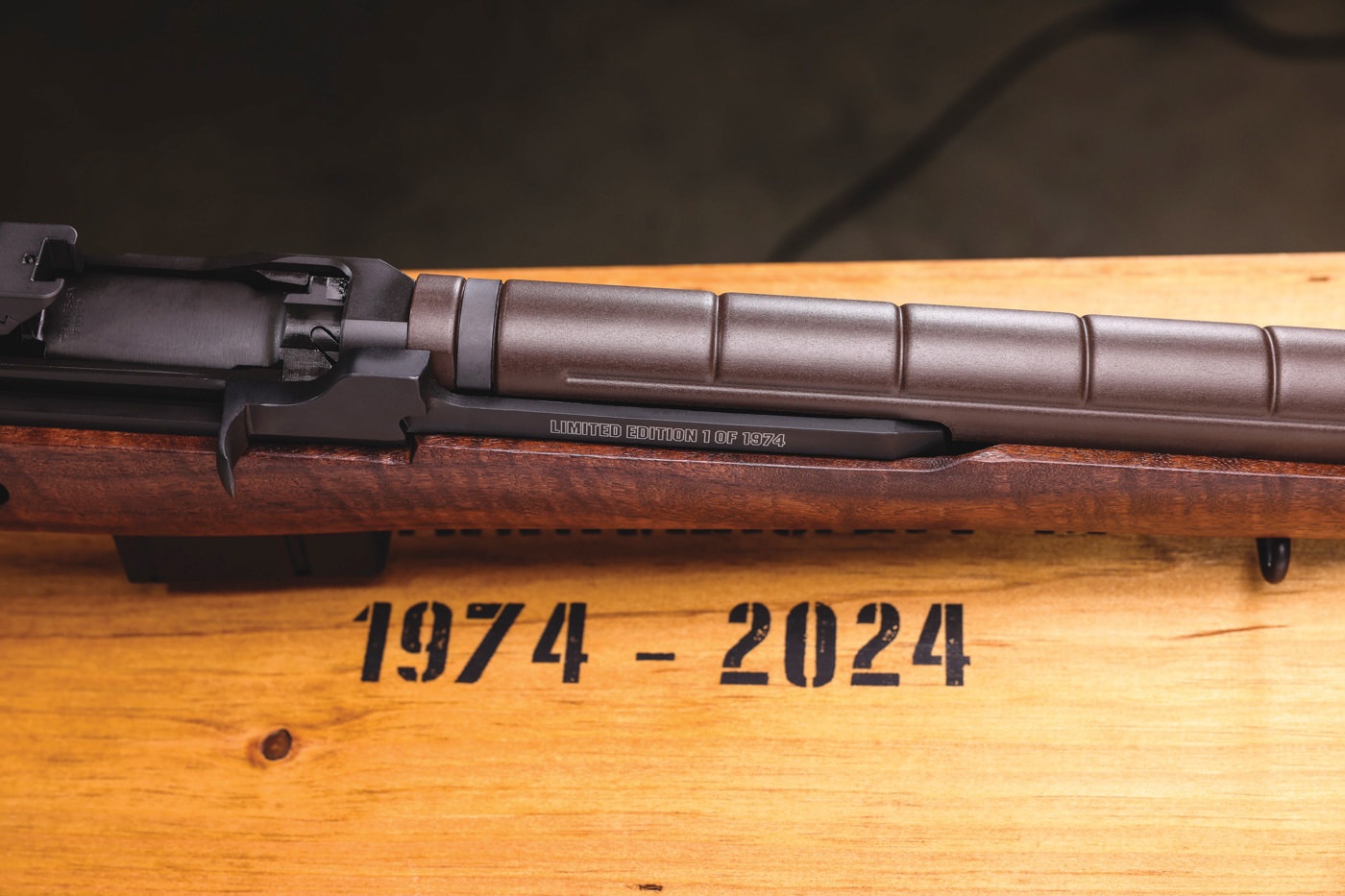
The T44 went head-to-head against the T48, an Americanized version of the FAL, and prevailed. Along the way, it gained the formal appellation M14. This sexy beast subsequently endeared itself to generations of G.I.s.
The M14 Goes to War
While debate rages over the reliability and downrange thump of the M16 and its revolutionary 5.56x45mm round, voices speaking ill of the effectiveness of the M14 and its .30-cal. cartridge are conspicuously absent.
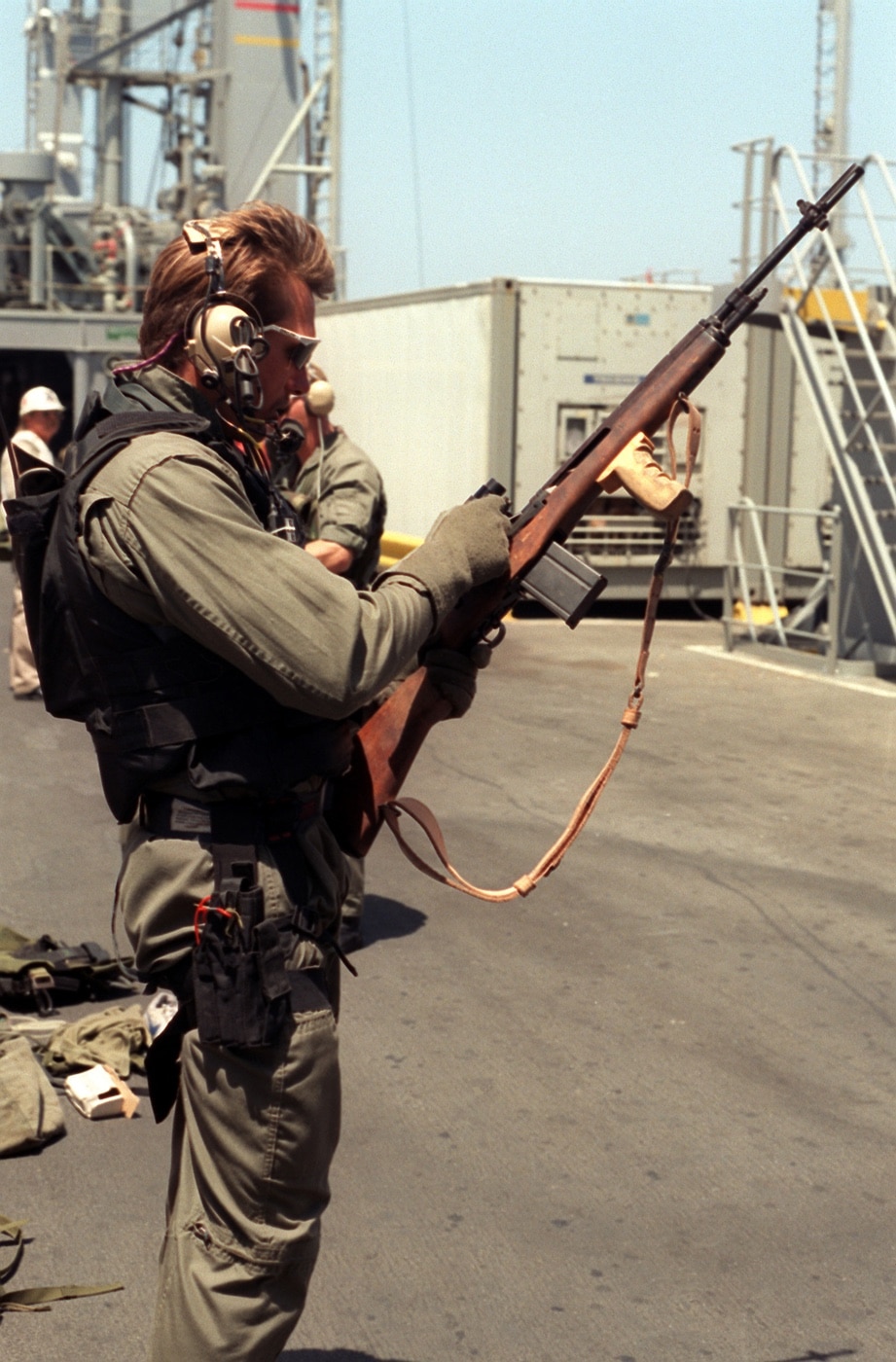
A dear friend who served in Vietnam as a Navy SEAL in 1970 packed an M14 rifle and as many magazines as he could carry every time he ventured downrange. Like my wife’s grandfather before him, that beefy .30-cal. round made the extra weight burden worthwhile for him. This argument remains valid even today.
And so, the M14 soldiered on for the next nearly seven decades. The M14 was modified into a squad automatic weapon, a close combat tool and a designated marksman rifle. U.S. troops used the big weapons to punch through barrier materials, reach out long distances and detonate unexploded ordnance at stand-off ranges. The old girl just won’t quit. And then in 1974, Springfield Armory began making these magnificent rifles in Geneseo just for us. (Learn more about the founding of today’s Springfield Armory in Geneseo, Illinois.)
Impressions
There’s something vaguely sultry about the way that big, exposed bolt cycles back and forth on the M1A. The synergistic combination of steel and walnut just touches something primal in the gun nerd’s soul. The distinctive racket it makes when charged is the sound of pure unadulterated freedom.
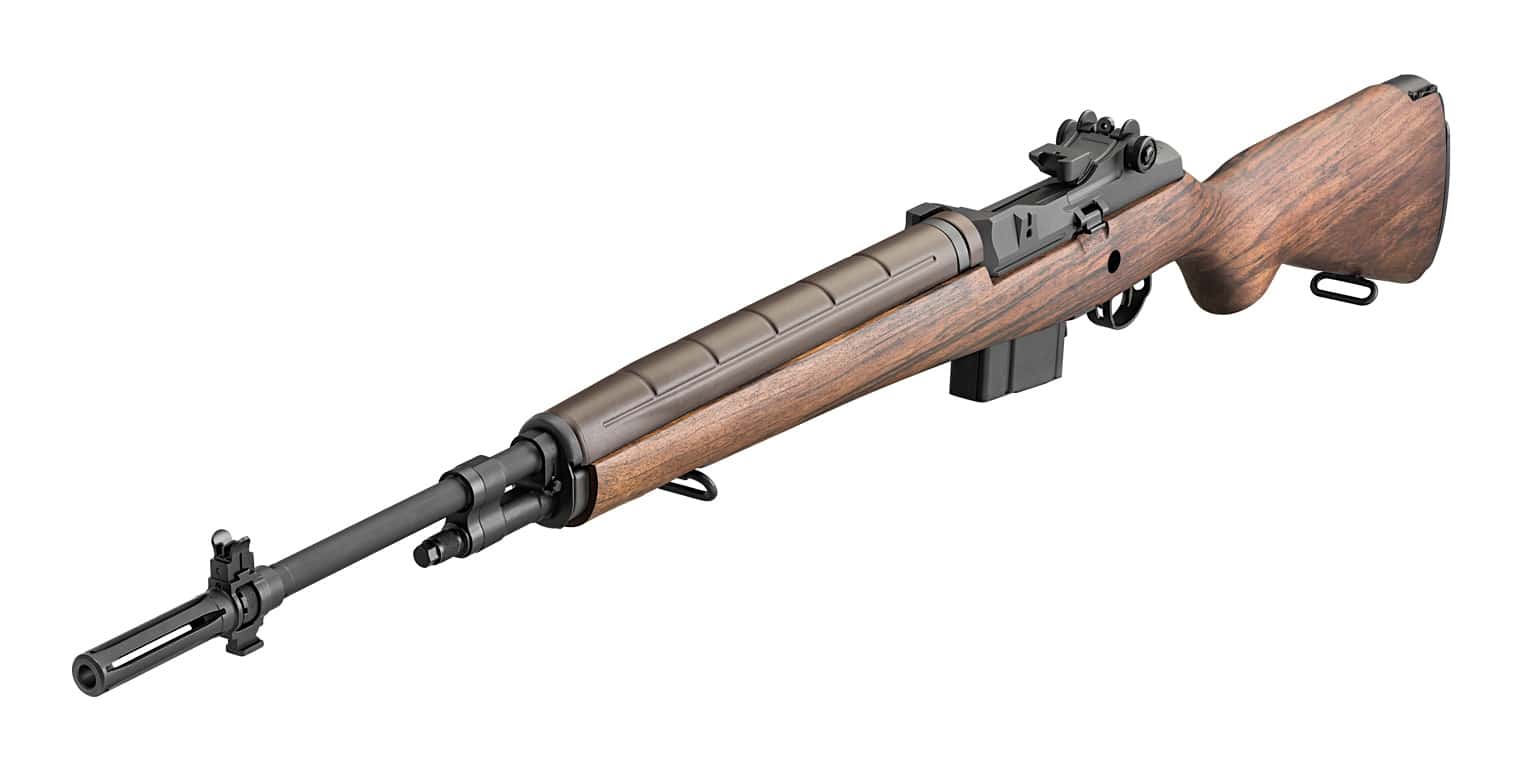
This is a serious rifle firing a serious cartridge designed to do serious things. Recoil is present without being objectionable, and the gun fits my anatomy like a second skin. When fed most any decent ammo, the M1A is as reliable as a mother’s love. It will also shoot way straighter and farther than my aging eyes are capable of managing.
Golden Anniversary Edition
The M1A is an innately attractive firearm. The 50th Anniversary version is all the more so. Featuring all of the rugged secret sauce that makes the rack grade M1A such an unstoppable force on the range, this special-edition rifle is all that and pretty to boot.
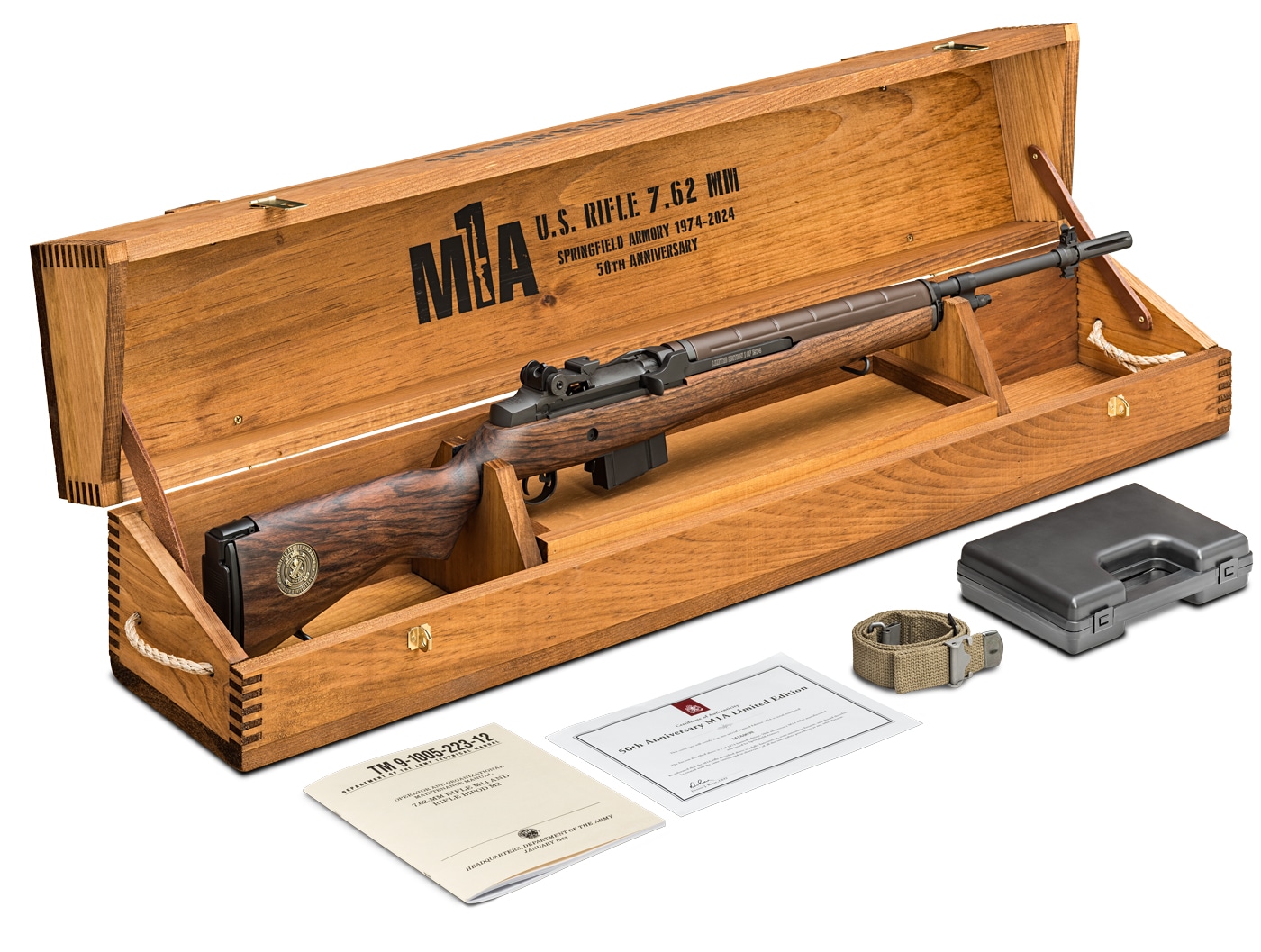
The package starts with an M1A. Each copy is marked 1 of 1974 on the op rod. Custom serial numbers run from M1A0001 through M1A1974. Then there is the gorgeous upgraded walnut stock with a 50th Anniversary Gold Medallion inlay.
The gun comes with an Eastern white pine custom wooden crate sporting 50th Anniversary markings in the interior along with an M14 Army Operator and Maintenance Manual, M1A cleaning kit, G.I. sling, and Certificate of Authenticity. The rifle ships in the expected superlative Springfield Armory padded range bag.
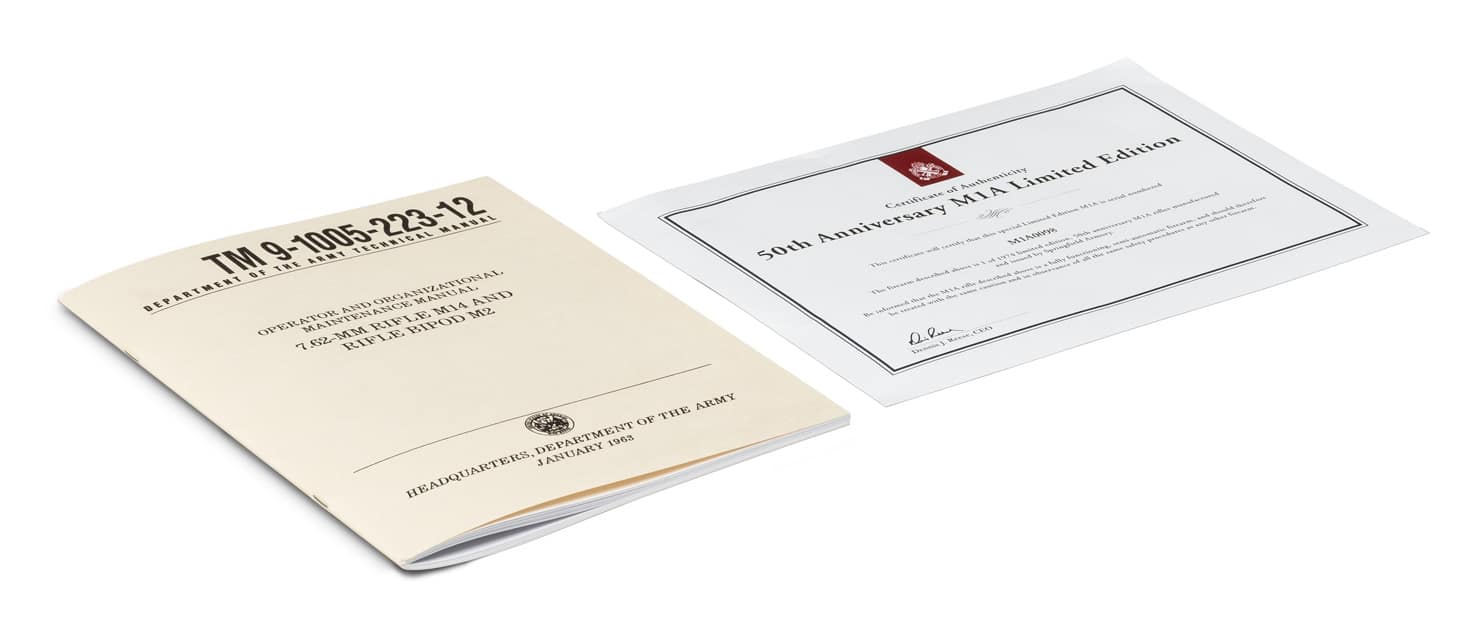
I must say, the whole package is truly remarkable. The rifle displayed in the open wooden crate is truly a great conversation piece, and captures the unique appeal of the M14 design — a military rifle that represents a time when all guns were made of wood and steel. Combine that with the attractive markings on the crate along with all the cool gear you get with it, and you have a rare and appealing addition to any gun enthusiast’s collection.
And while the end result is undeniably attractive, I will point out this is still a working firearm. You could conceivably use this 50th Anniversary M1A for hunting, target shooting, recreational blasting and home defense. This rifle has all the expected Springfield Armory utility in a sweet, attractive package. The MSRP for the whole shebang is $2,499.
Ruminations
Everybody likes nice things. In the 50th Anniversary Springfield Armory M1A, we see a timeless design transformed into a piece of ballistic art. The appointments are perfect, and the cool-guy accessories ample. Unlike the sort that just hangs inert on your wall, this is the objet d’art that thrives on both the rifle range or secured behind the closet door for those times when the dog just won’t shut up at two o’clock in the morning.
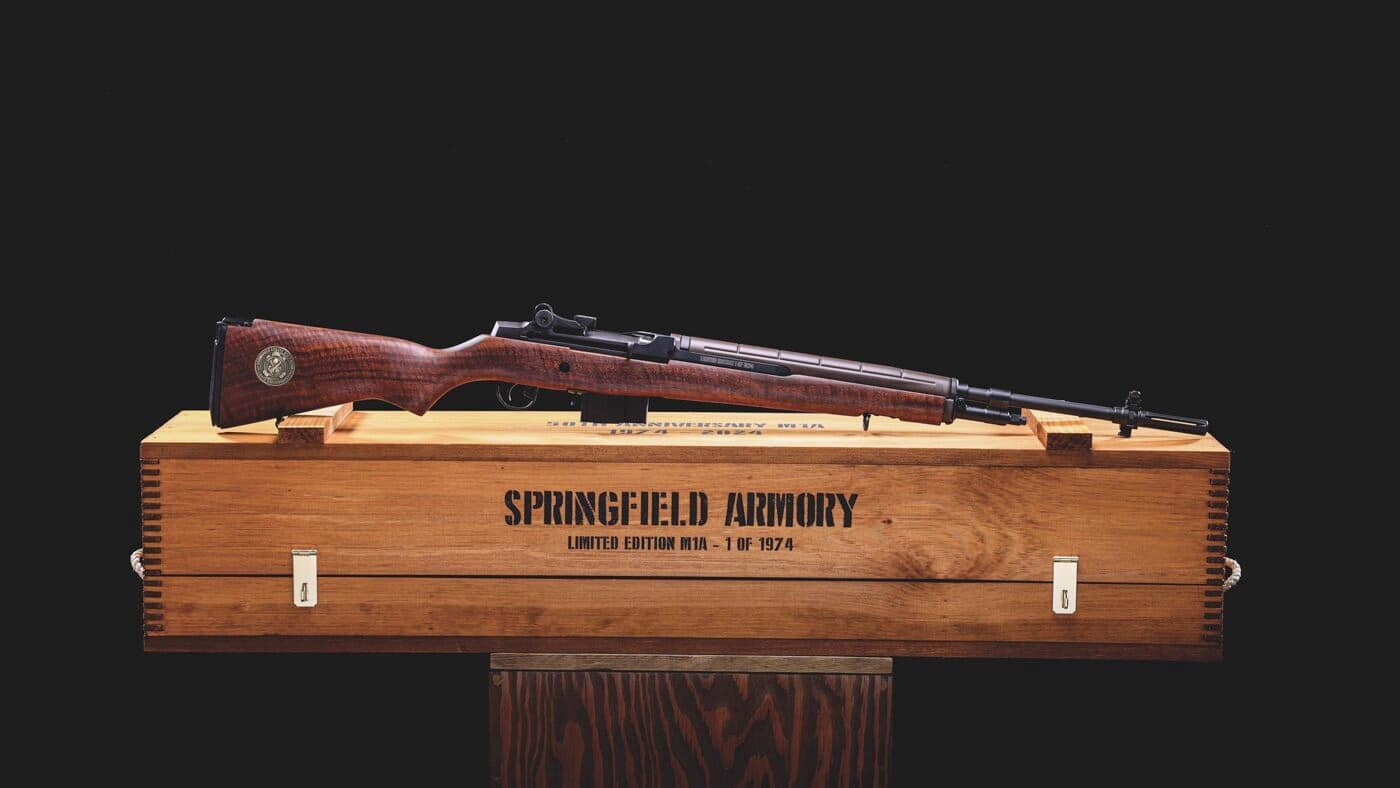
I will admit to harboring unvarnished affection for the M1A rifle. As I said at the beginning, this gun and I go way back. The 50th Anniversary M1A rifle embodies the spirit of this classic old warrior. Just like yours truly, it is proof positive that the timeless M1A is really only just getting started.
Editor’s Note: Be sure to check out The Armory Life Forum, where you can comment about our daily articles, as well as just talk guns and gear. Click the “Go To Forum Thread” link below to jump in!
Join the Discussion
Featured in this article
Read the full article here












